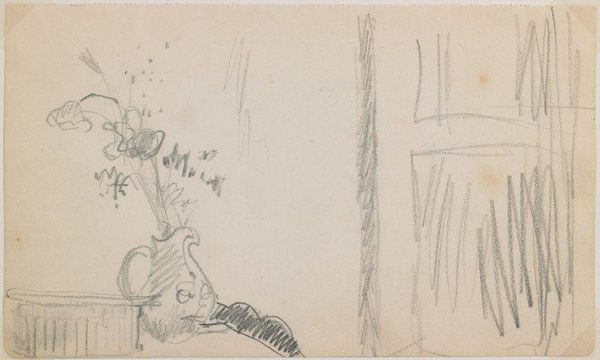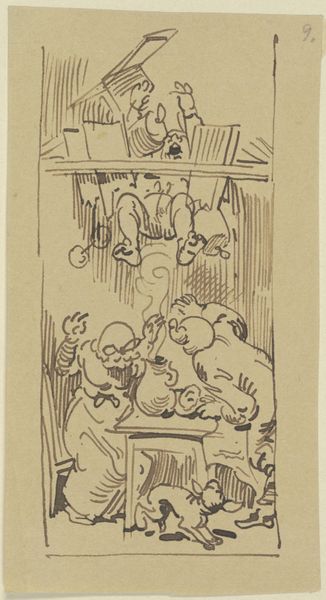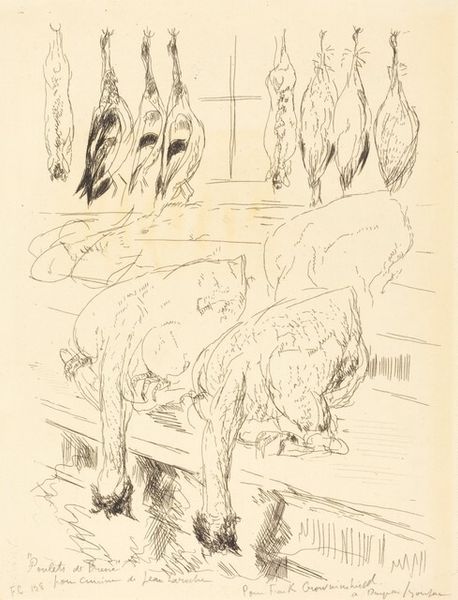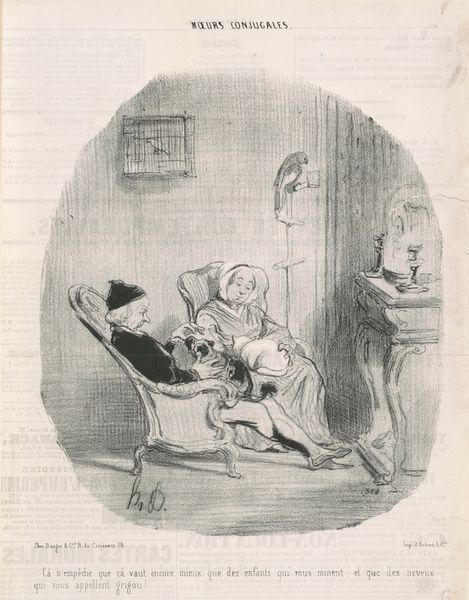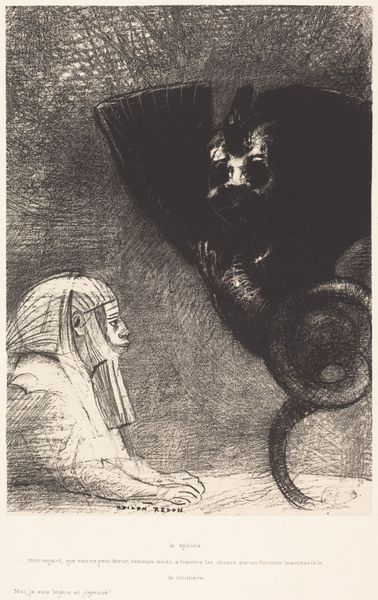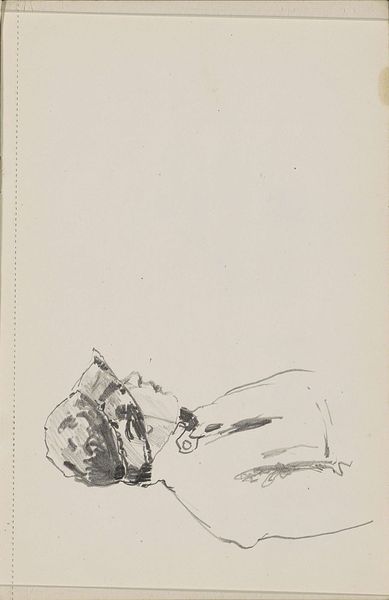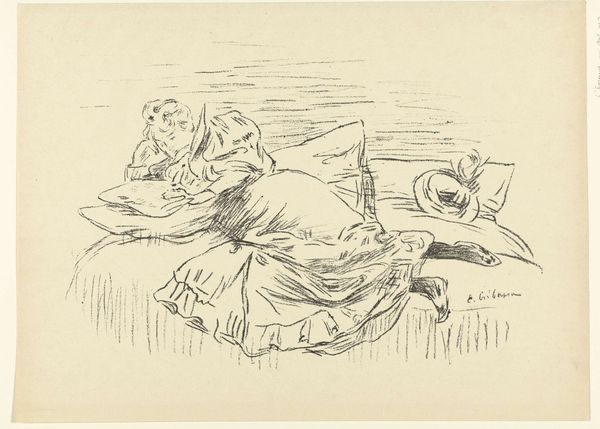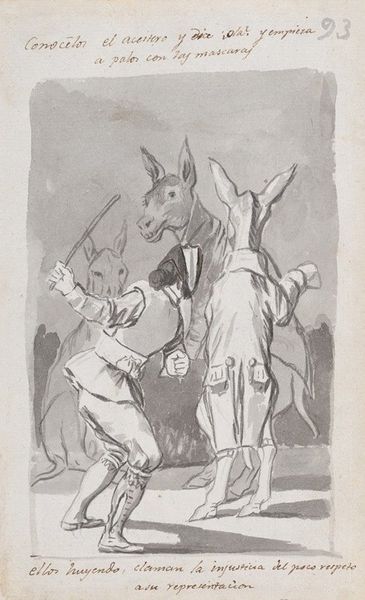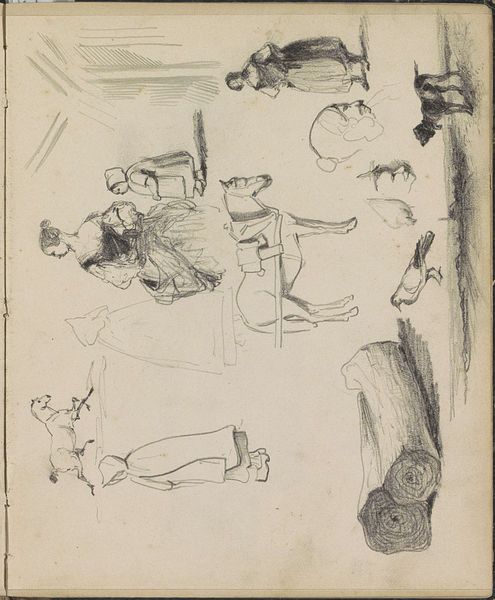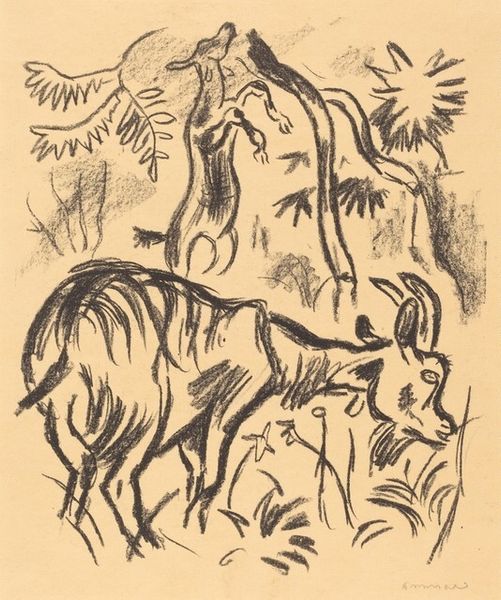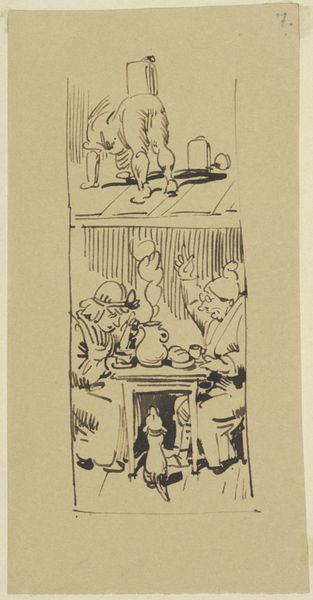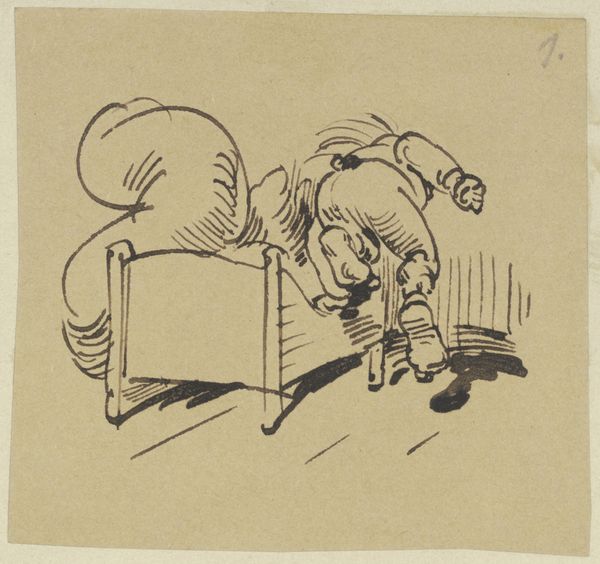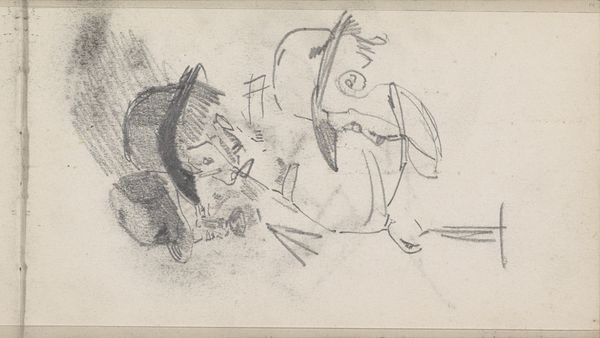
drawing, print, etching
#
drawing
#
art-nouveau
# print
#
etching
#
figuration
#
line
#
symbolism
#
genre-painting
Copyright: Public domain
Editor: Here we have Théophile Alexandre Steinlen’s “Cats Race,” created around 1898 using etching and drawing. The frenetic energy really jumps out. What can you tell me about this work? Curator: Steinlen’s piece vibrates with a unique late 19th-century energy. The domestic sphere, here, is anything but tranquil. Consider the context: rapid urbanization was changing social dynamics, challenging traditional bourgeois notions. How might the depiction of cats – typically symbols of domesticity – subvert those expectations in this print? Editor: That's a great point. The cats feel less like cuddly pets and more like unruly members of a changing society. They're definitely disrupting the order. Curator: Exactly! And what about the gendered element? During this period, women's roles were intensely debated. How can we interpret the dynamism of these animals as a symbolic revolt against traditionally assigned roles in society and art? Editor: I hadn’t thought about that angle. The image definitely reflects women wanting a larger space than was expected in the household. Curator: Indeed. It allows us to consider not just animal behavior, but the societal “norms” these actions challenge. Is it just coincidence or does it reveal deeper social awareness from Steinlen? Editor: I agree. It certainly gives me a lot to consider. It makes me want to go and research more about women's role at that time. Thank you for that! Curator: My pleasure! Viewing art as an intertwined product, reflecting society's aspirations and contradictions, brings us closer to the era of creation.
Comments
No comments
Be the first to comment and join the conversation on the ultimate creative platform.
